MusicRadar Verdict
Combines the best in Sequential design with some classic filtering but ends up as a synth with its own attitude and heart.
Pros
- +
Easy layout, what you see is what you get, including fast, dramatic, and intuitive modulation.
- +
Fantastic forward sound with the lovely temptation to tweak and create.
- +
Six Minimoogs in one, one Memorymoog or just one damn fine Sequential.
Cons
- -
Not as many modulation options as on some synths.
- -
You can get better polyphony for the same price.
- -
Presets are a little randomly placed.
MusicRadar's got your back
Sequential Trigon-6: What is it?
Although Trigon-6 is sadly the last synth that pioneer and Sequential founder Dave Smith had a hand in, it’s a suitably brilliant send-off. Not only is it an amazing synth, but it completes a trio of Sequential synths based on three of the finest brands in synth history.
Trigon-6 follows the 2015 Prophet-6 and 2016 OB-6 and shares many features with its older siblings, but at the core of each synth is a classic individual filter setup that gives each a distinct, vintage personality.
Prophet-6, of course, harks back to the original Sequential polysynth, the Prophet-5, with two filters per voice, one being a four-pole, resonant, low-pass inspired by that much-loved machine. OB-6 had the mighty Tom Oberheim’s design input and features an Oberheim-inspired 2-pole resonant filter.
The all-new Trigon-6 features a switchable 2/4-pole ladder filter, and while it’s an enhanced version of the one that features in the company’s Pro 3, it is also very reminiscent of that found in the odd Moog synth.
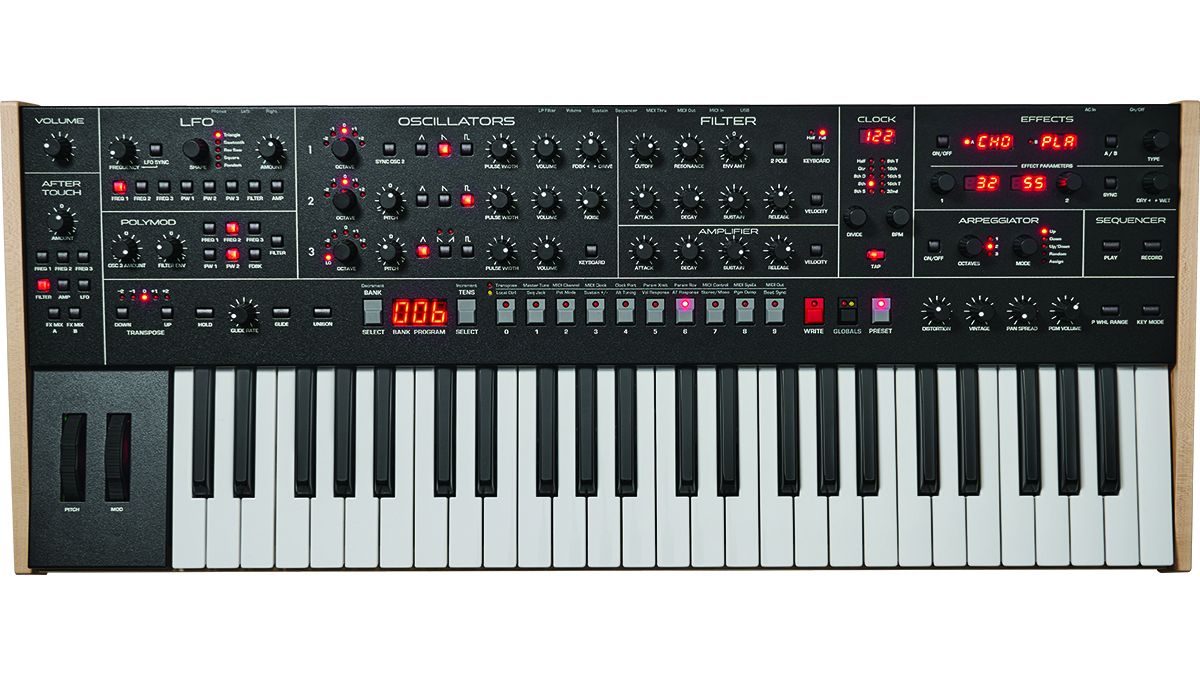
In fact, with those six notes of polyphony and other features, you could draw comparisons between Trigon-6 and the Moog Memorymoog. And in a similar synth “stars aligning” moment, Trigon-6 is Dave Smith’s last synth and the Memorymoog was Moog’s last (in its first incarnation)…
It’s a brilliant piece of marketing, then. Trigon-6 is the third of three analogue polysynths with very similar signal flows and the exceptional ‘what-you-see-is-what-you-get’ Sequential control (no menu diving here) plus features like Poly Mod and powerful digital effects. They are priced identically, so you simply choose one from them based on your favourite synth filter flavour.

Sequential Trigon-6: Performance and verdict
Trigon-6 does come with a few extras over the others, and some of these take it even further into Memorymoog territory. First of all, while OB-6 and Prophet-6 have two oscillators with the second able to be used as an LFO, Trigon-6 has three with the third able to take up LFO duties (like the Memorymoog).
OB-6 and Prophet-6’s oscillators are variable; Trigon’s are fixed to pulse, saw and triangle, although a cool matrix section lets you set up combinations of the three waves per oscillator (also reminiscent of the Memorymoog). There’s even a Drive/Feedback control that imitates the rerouting output-to-input feature made famous by the Minimoog (see Hands-on Action below for more).
Other than that, those familiar with the OB-6 and Prophet-6 will be at home with the Trigon layout: modulation to the left, then oscillators, filters and effects to the right plus some basic sequencing and arpeggiation.
For dialling in sounds, the ‘Bank’ and ‘Tens’ button approach is the same too. Sequential’s ‘knob per function’ is very much in evidence aside from several global options where you use the preset buttons to access different parameter layers.
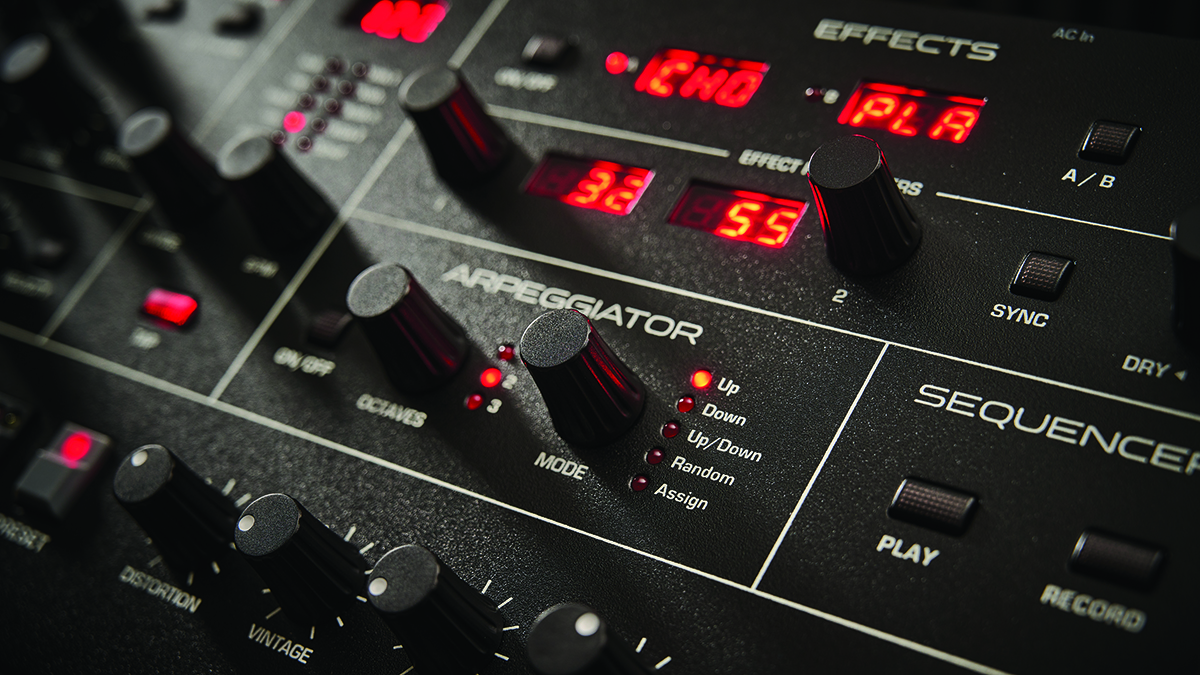
Hands-on action
Next to its siblings, Trigon-6 does offer that bit more instant sonic tweaking. Yes, you get the Poly Mod section for extra modulation per voice, but it’s controls like Feedback/Drive that deliver a surprising level of sculpting – and often dirtying – potential.
Select Drive, for example, and the oscillator output is increased for added filter saturation. It’s not always audibly obvious – you have to push it – but twist this control to the left, and you get much more drama.
A feedback loop is set up between the filter output and mixer input with everything now possible: from basic distortion/saturation to gritty, industrial, and fluttery-type effects.
While experimenting, we couldn’t quite predict what would happen – just by twisting the Cutoff, Resonance and Feedback controls by a tiny amount, the sound will change wildly – but the end results are almost always fascinating, (usually) filthy and incredibly fun. Great for inspiring creative ideas.
You also get an analogue Distortion control which adds a lot of body, sometimes at the expense of high frequencies. Another neat hands-on mangler is the Vintage option (also on other Sequentials) which adds drift and parameter shifts to emulate the unpredictable nature of classic components.
All in all, loads to get happy and hands-on about and to point the Trigon-6 sound in wilder, more unpredictable directions.
Modulation options
With Trigon-6, you get four sets of modulation sources: the LFO and Poly Mod sections to the left and amp and filter envelopes to the right.
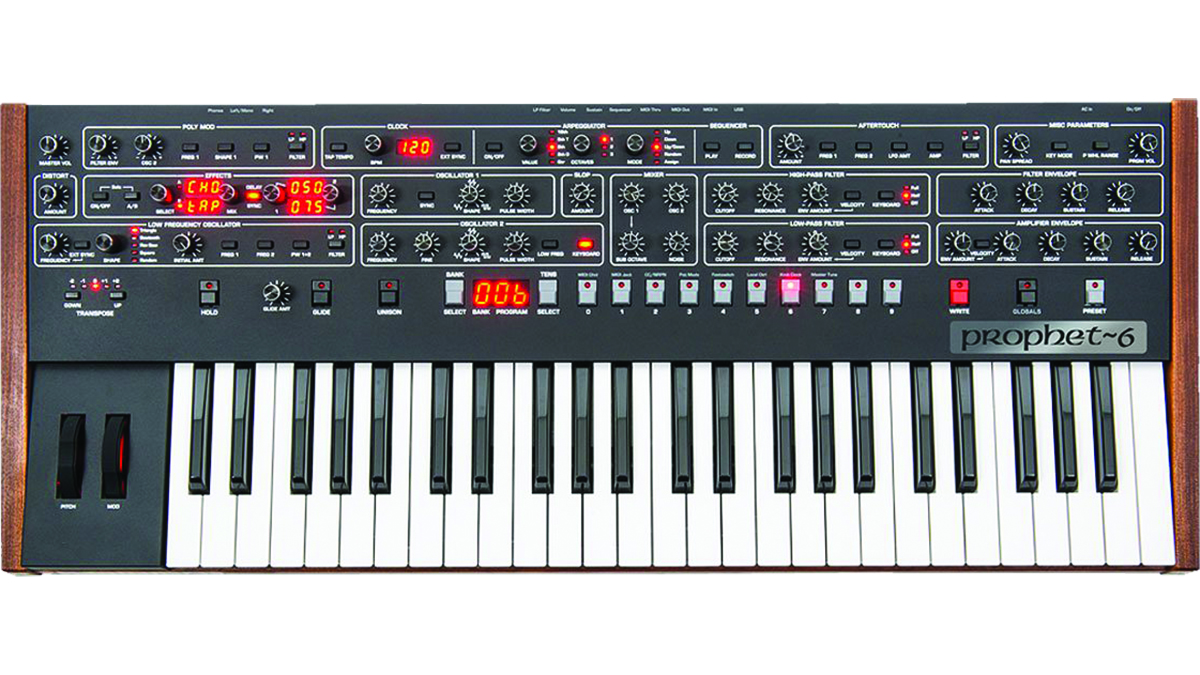
• Sequential Prophet-6 and OB-6
Trigon-6’s sister synths are worthy alternatives, as their ethos is so similar, but their sonic souls each recall very different classic synth lines.
• Arturia PolyBrute
Another analogue six-voice synth, PolyBrute weighs in at less cash and has a wealth of modulation features, not to mention sound morphing and ribbon controllers. Loads of sounds and filter flexibility too.
• Novation Summit
With Summit you get 16 voices, a not-quite-analogue (but as good as) signal path, plus some breathtaking features and sounds, for a good deal less cash.
An Envelope Amount dial controls how the modulation level from the dedicated four-stage envelope generator affects the filter. It’s a bipolar control so some interesting effects can be had by twisting it left where it reverses values and inverts the envelope settings, for opposing peaks but not always opposite results.
A Half/Full button lets you increase the keyboard modulation of the cutoff frequency so the higher you play, the more natural brightness you get. The more standard amp envelope controls volume over time and that’s it, although it has a Velocity button to switch in and out where the envelope becomes velocity sensitive.
When it comes to the last two modulation areas, LFO and Poly Mod, we have Sequential’s brilliant – but limited – modulation ethos on show. Everything is right there in front of you but the one knob/switch per parameter ethos means there simply isn’t room for an over-the-top number of sources and destinations.
LFO has Frequency, Sync, Shape and Amount controls to apply to frequency (x3), pulse width, filter and amp destinations. Poly Mod similarly allows you to use Oscillator 3 or the filter envelope to modulate frequency, pulse width, filter and the crazy feedback parameter.
These are bipolar sources too, so you can easily apply opposing or negative values. Being a ‘polyphonic modulation’ option, you can also apply Poly Mod’s modulation to individual voices (as opposed to the LFO modulation being applied to all of them).
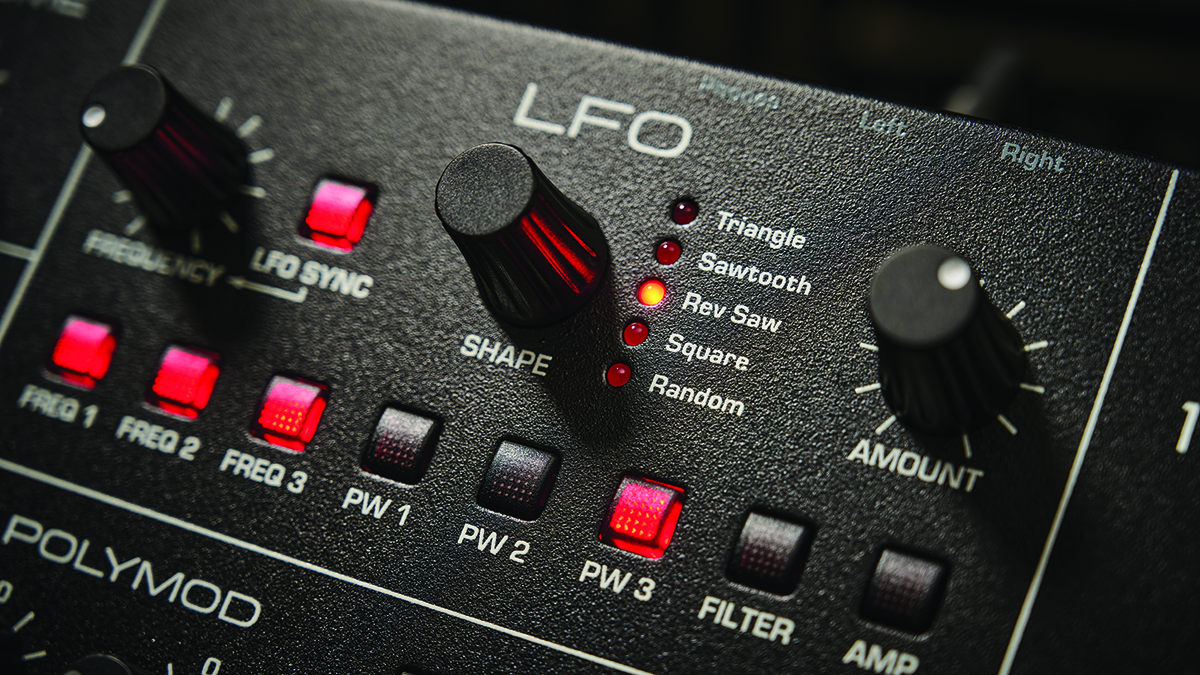
While these modulation options are great, that’s not a lot of source/destination action compared to some synths, but with such easy access and no menu selections required, it’s probably the most fun, hands-on and instantly rewarding modulation you’ll come across on any synth (aside from OB-6 and Prophet-6, of course!).
We’re always stupidly impressed with the Poly Mod concept, even though it’s been around for years, as with the other modulation features here and the vast amount of sound design doors that they will open. Not that you’ll necessarily need them straight away though, because Trigon ships with plenty of sounds to entertain you from the get-go.
There are 500 each of both user and factory sounds. As ever with Sequential synths of this ilk, you’ll be impressed with the range on offer, but the process of auditioning them feels a little murky.
There’s no screen, just three digits staring at you, with no obvious groups of sound type. But you might well love this randomness because as you step through, every click is a surprise and there is plenty of variation on offer.
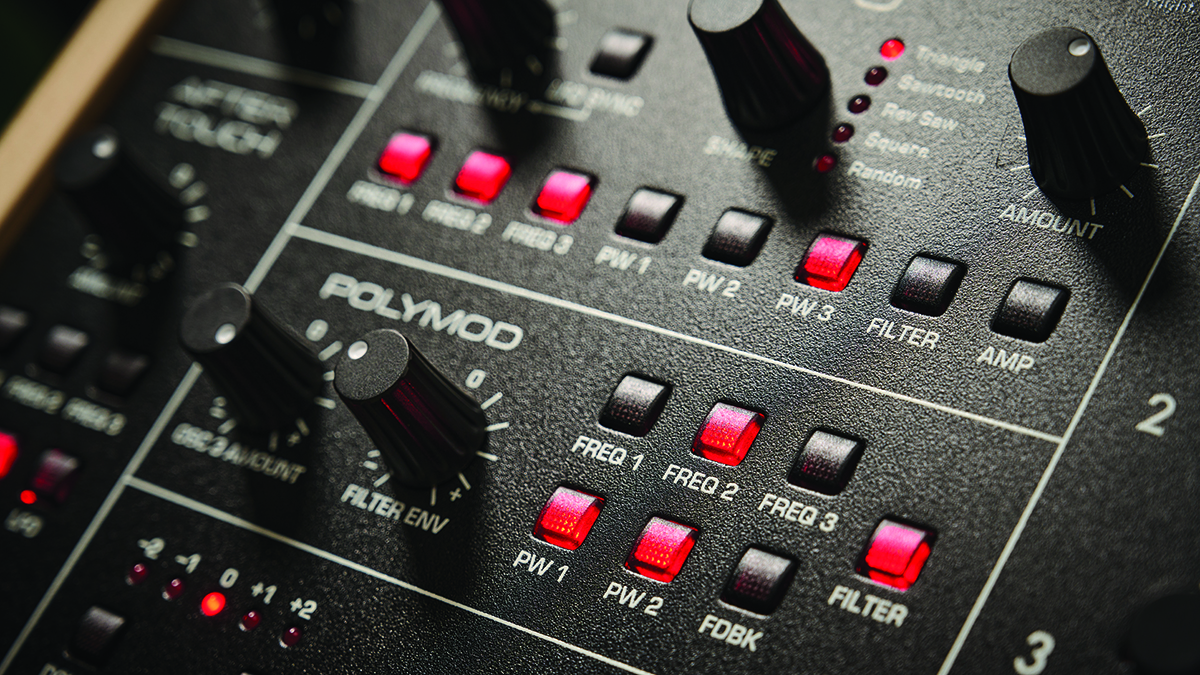
On the whole, there are more classic synth sounds with loads of huge leads and big bold basses. The layering of the three oscillators delivers some great Moog moments too with smooth basses and detuned voices creating some wonderful unison-style dramatic moments – and of course, you have six notes of polyphony to play with rather than a single Minimoog note, so huge sounds and potential are never far away.
The onboard arpeggiator also gets plenty of action but you don’t just get the normal dance music arpeggiations, but rhythmic offerings and more off-the-wall patterns. Best of all, though, is probably the more ethereal pads and evolving textures that use the modulation options.
What strikes you is the variety; there’s even DX-like tinkling and the odd guitar-like stab alongside the more expected Moog-a-like sounds. And it all takes an even more varied twist when you add effects.
These were one of our favourite features on the OB-6 and Prophet-6. They add a beautiful sheen and depth to the analogue side of the machine, in some cases filling in the sonic picture or in others taking it to an altogether new place.
You get a couple of delays (digital and bucket brigade), a chorus, some great phasers, a crunchy ring mod and plenty of reverbs. They’re crystal clear or can be a little dirtier, though we’d have liked more filth – maybe some bit crushers and proper digital nastiness to match the analogue unpleasantness.
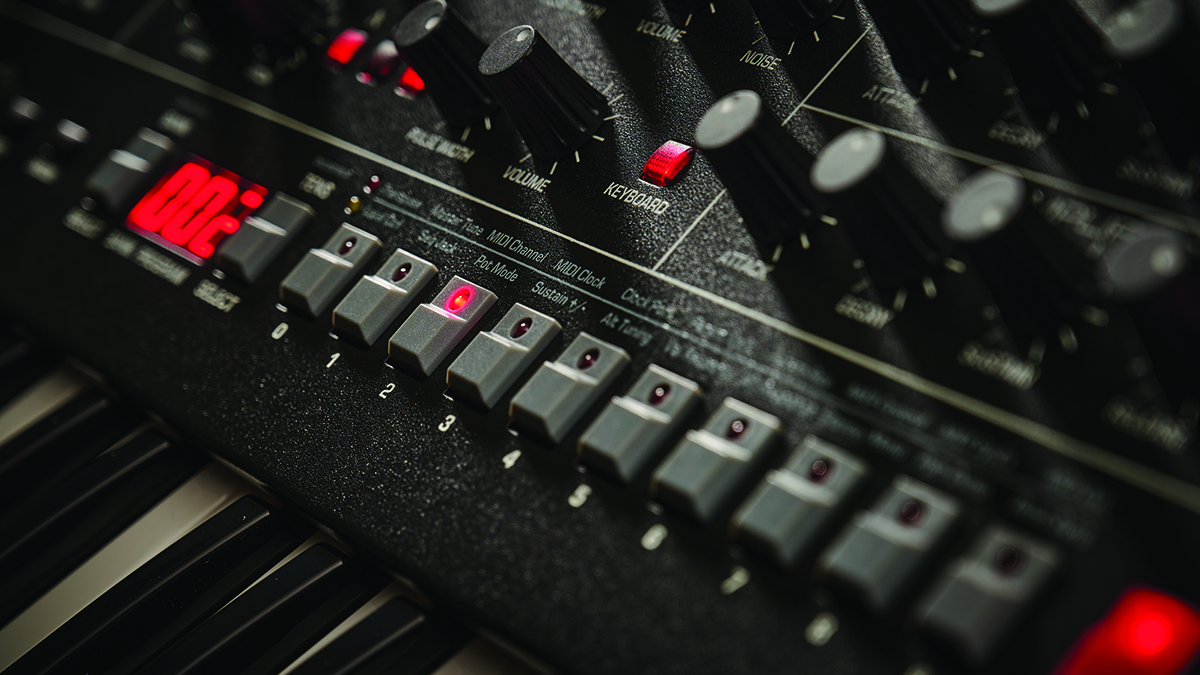
Trigon-6’s price of £3300 (street) will be off-putting to many in these tough times – and that can get you an awful lot of other synths and polyphony elsewhere – but you’re buying years of experience, that instant creativity and a wonderful twisting sound.
Trigon-6 is most certainly up there with Prophet-6 and OB-6, so if any of these three synths are on your radar, it’s simply your choice of which legacy brand to buy.
As Dave Smith’s last synth, Trigon-6 is a fitting release in that it completes this set which was started almost a decade ago and has become the company’s high trio of iconic legacy synth brands.
And it can also be seen as a Memorymoog for 2023 if you really want to push the Moog thing. Or forget all of that and simply view Trigon-6 in its own finery. It’s a great-sounding poly with a wealth of features, and easily earns its place on the classic synth podium.
MusicRadar verdict: Combines the best in Sequential design with some classic filtering but ends up as a synth with its own attitude and heart.
Sequential Trigon-6: The web says
"It truly does open up its own unique avenues of exploration: sounds with deep modulation, drifting Vintage detuned textures, bone-rattling unison bass sounds, whistling overtones, and just absolutely solid leads and chord tones."
Perfect Circuit
Sequential Trigon-6: Hands-on demos
Sequential
sonicstate
Loopop
Reverb
Sequential Trigon-6: Specifications
- 6-voice analogue poly synth
- 61-note semi-weighted keyboard with velocity and aftertouch
- 3 VCOs with 3/4 selectable shapes
- Drive/Feedback and Vintage controls
- Switchable 2/4-pole, resonant, low-pass, ladder filter per voice
- Filter and amp envelopes with velocity modulation
- Polyphonic step-sequencer with 64 steps
- Arpeggiator with 5 modes
- CONTACT: Sequential
Andy has been writing about music production and technology for 30 years having started out on Music Technology magazine back in 1992. He has edited the magazines Future Music, Keyboard Review, MusicTech and Computer Music, which he helped launch back in 1998. He owns way too many synthesizers.
"That's what it takes to make music that's gonna last forever": Olivia Rodrigo and Chappell Roan producer Daniel Nigro on crafting timeless tracks
“A fully playable electro-mechanical synth voice that tracks the pitch of your playing in real time”: Gamechanger Audio unveils the Motor Pedal – a real synth pedal with a “multi-modal gas pedal”
“It was the first rock monster that we'd created”: How an explosive 2001 switch-up revealed just how ferocious Muse could get











